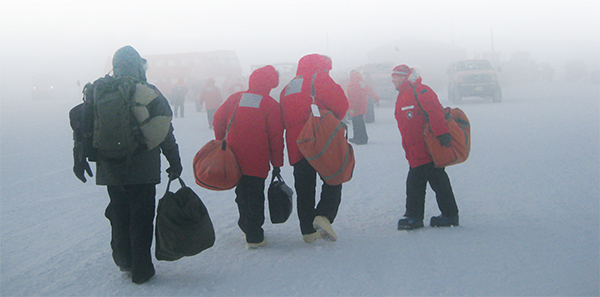

Explore This Issue
ACEP Now: Vol 35 – No 02 – February 2016A selection of extreme cold weather gear issued to U.S. Antarctic Program participants.
Why New Zealand? While the tip of Antarctica’s peninsula (which we call “the Tropics” for its relatively balmy weather) is closest to South America’s tip at Cape Horn, the United States has only the small Palmer Station there. Those working there travel by ship through the Southern Ocean’s often brutal Drake Passage. Those of us working at the McMurdo (77°50’ S, 166°36’ E) and Amundsen-Scott South Pole (90° S, 0° W) stations don’t take that route. McMurdo Station, by far the largest of the three stations, is located directly south of New Zealand.
Christchurch is where the US Antarctic Program has its base of operations and, most important, distributes the ECW gear. A lesson learned last time: make very certain that every piece fits properly; you won’t have an opportunity to swap it out when you get there.
A lesson learned last time: make very certain that every piece fits properly; you won’t have an opportunity to swap it out when you get there.
Once in Christchurch, you arise every morning at about 4 a.m. to see if the weather has cleared sufficiently for the C-17 to attempt the five-hour trip. Often, you get up, get dressed, go into the lobby, and eventually discover that you should just go back to bed and wait another day. That, however, is far better than the experience that many folks have of almost getting to McMurdo or actually flying overhead and then having the plane return to Christchurch because the weather is too bad to land. This time we made it, and the winter adventure in Antarctica begins.
Dr. Iserson is professor emeritus of emergency medicine at The University of Arizona in Tucson.
Pages: 1 2 | Single Page





No Responses to “Prepping, Packing Among Challenges of Providing Medical Care in Antarctica”